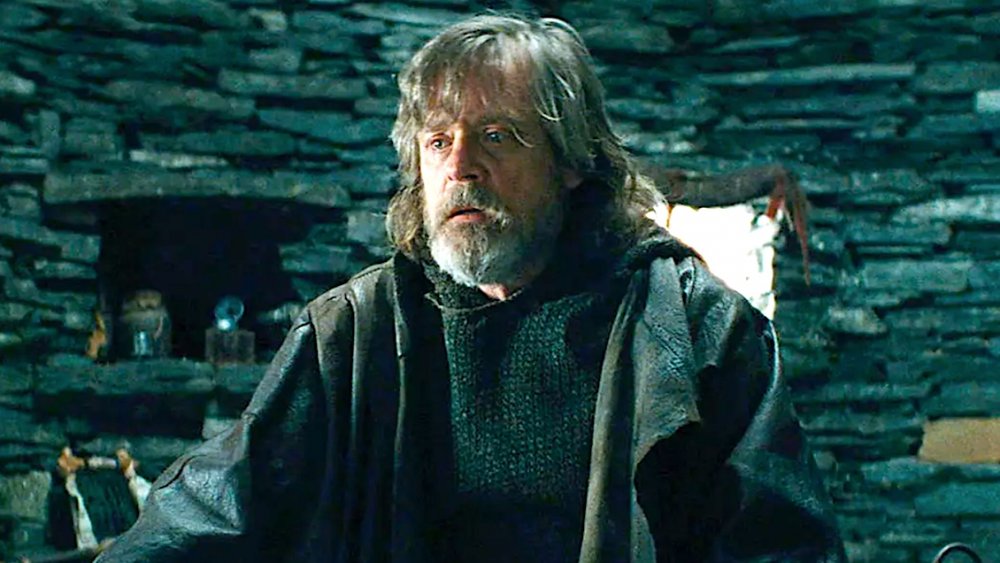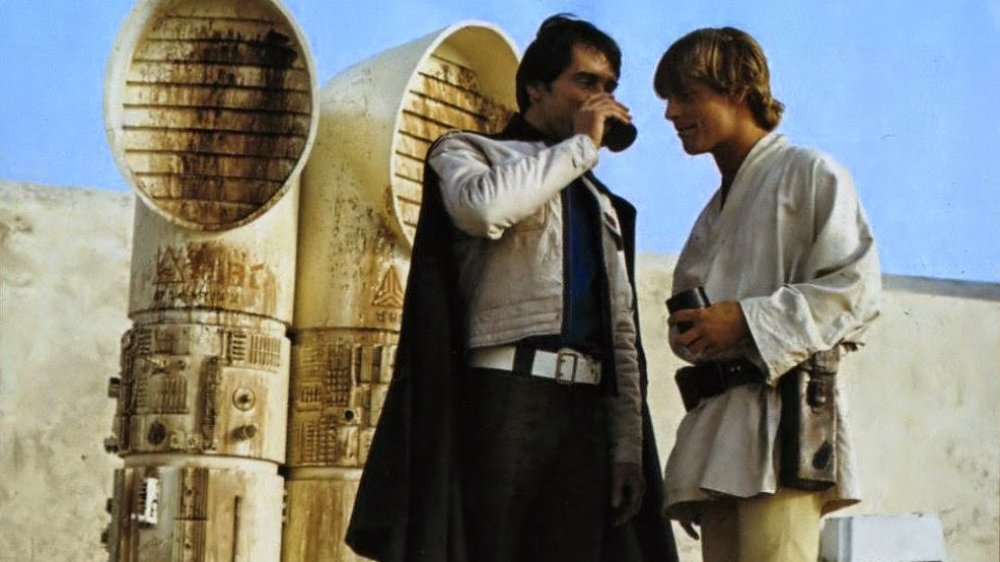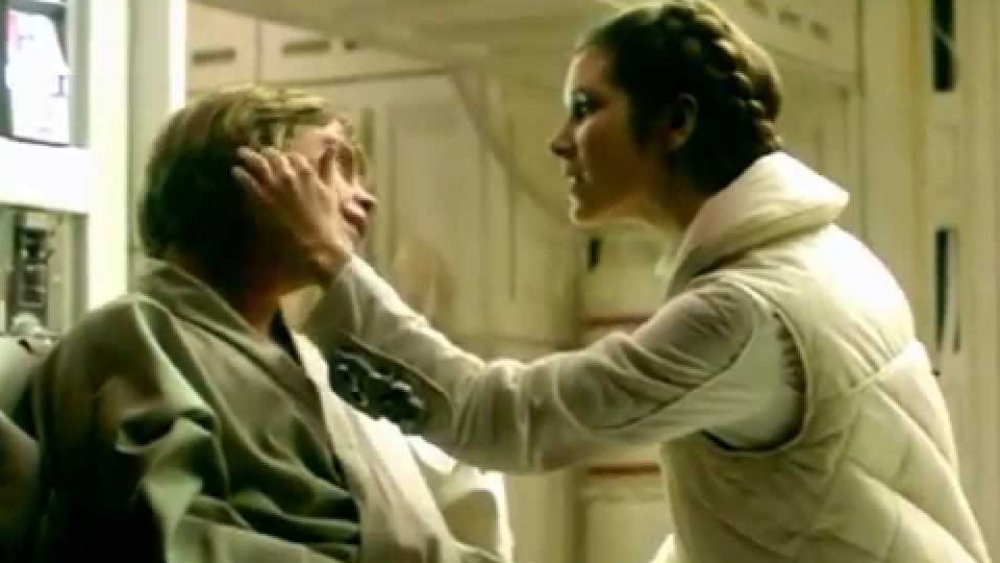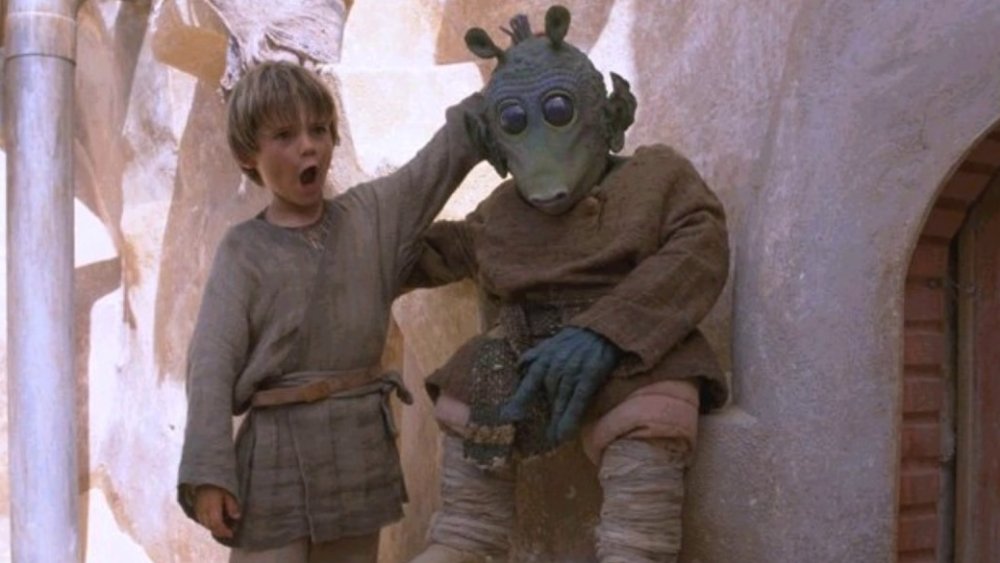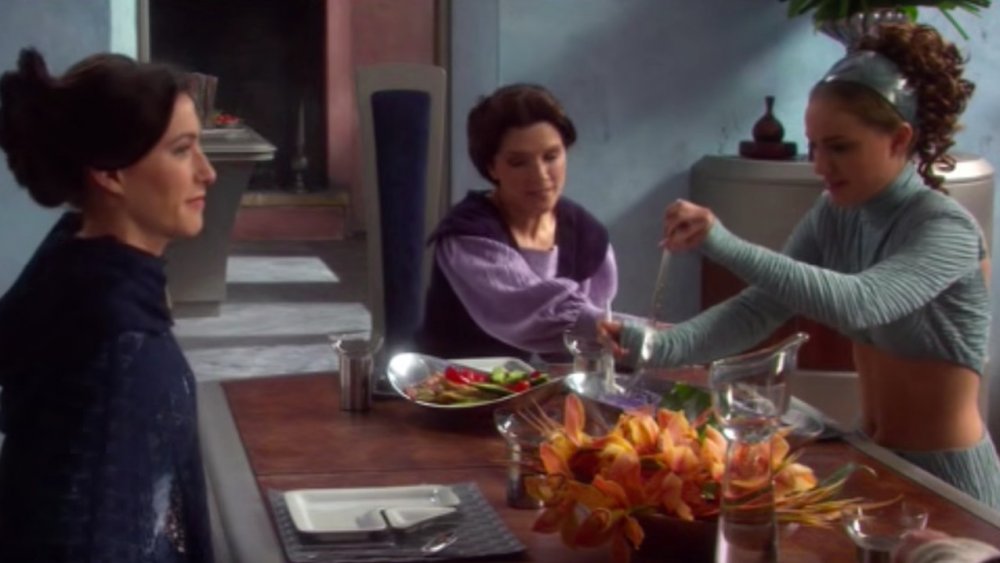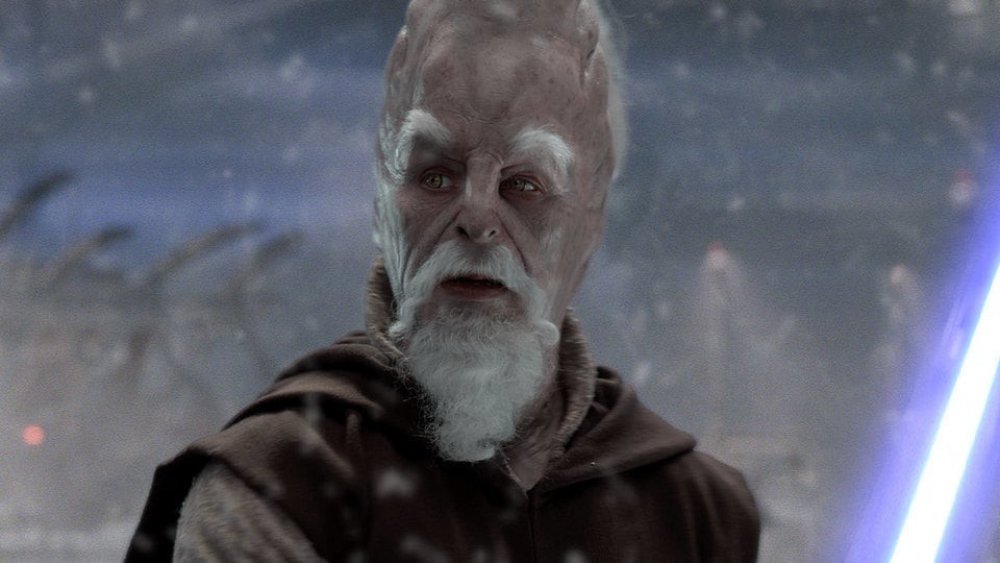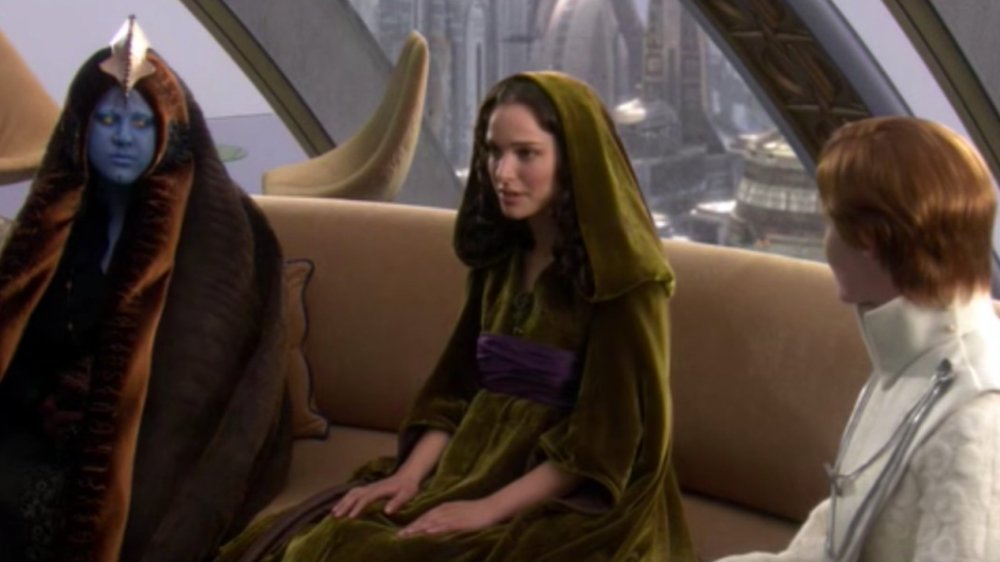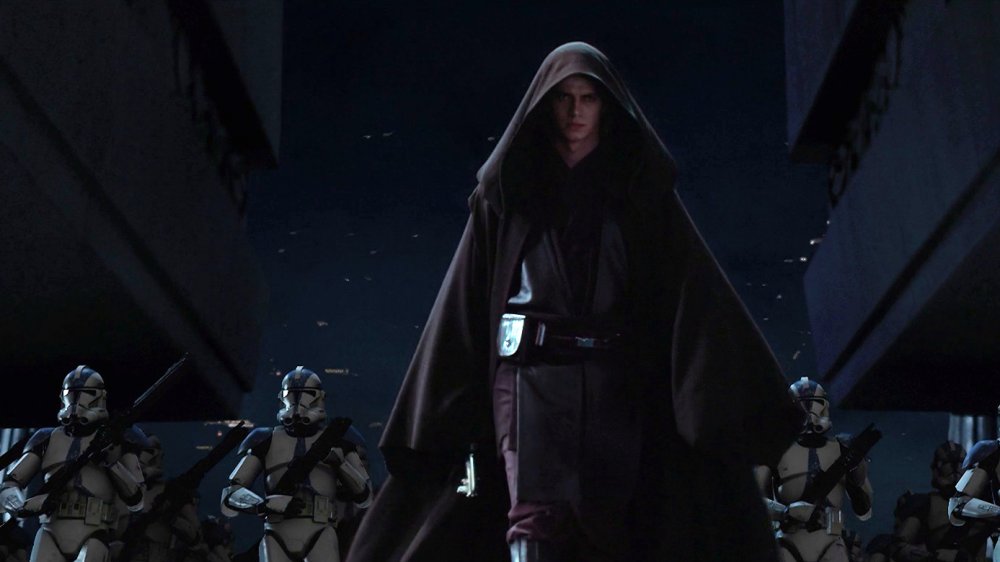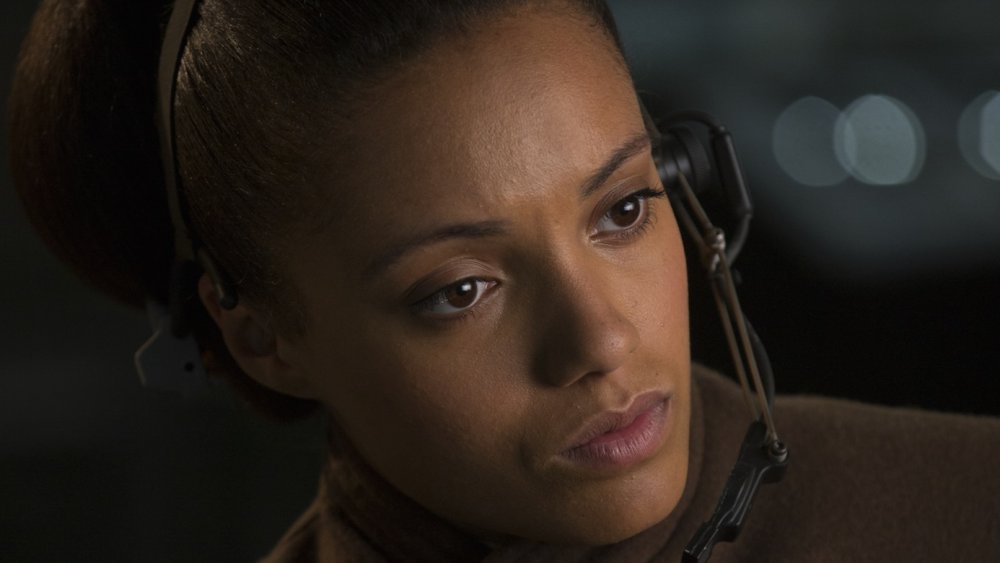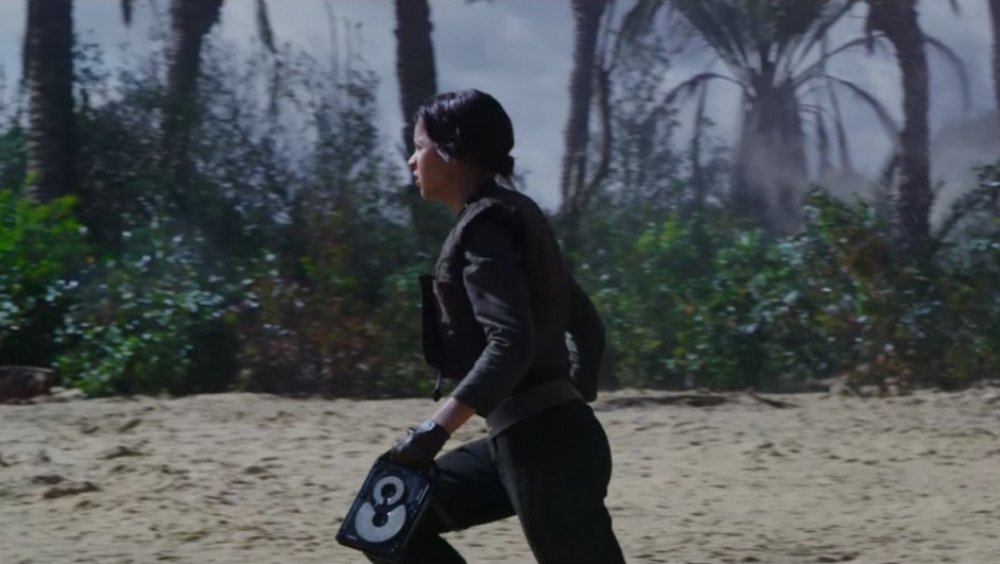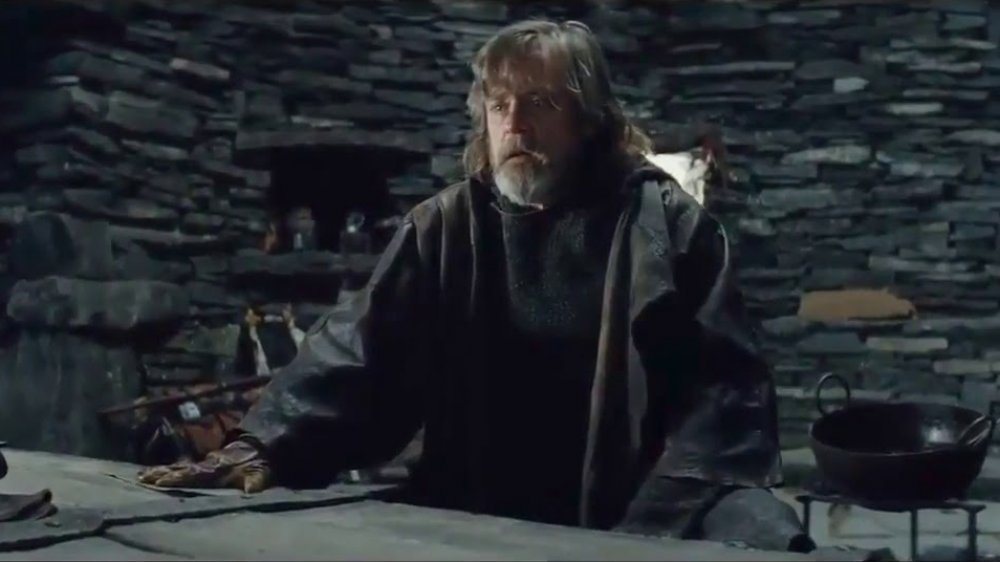Star Wars Deleted Scenes That Would've Changed Everything
Even if you leave out all of the TV series, books, comics, and video games, the Star Wars universe is massive. The franchise's live-action history stretches back more than 40 years and covers a growing list of feature films, from the original trilogy to spinoff films like Solo: A Star Wars Story. If you're hoping to marathon them all back-to-back, you have to be prepared to devote a day or more to the task.
Even if you watch all of the Star Wars films, though, you still have more to watch, and we're not just talking about the TV shows. As epic as the movies are, they all also feature deleted scenes of some kind or another, and some of those scenes could have played fairly pivotal roles in the finished films. From deleted subplots to abandoned action sequences, these are the Star Wars deleted scenes that could have had a big impact on the franchise.
Luke on Tatooine
In A New Hope, we meet Luke Skywalker when he and his Uncle Owen purchase C-3PO and R2-D2 from a group of Jawas, and learn soon after that he's a dreamer farm boy who hopes to one day escape Tatooine and join the Rebellion. It's a fine introduction for the character, and structurally it allows the narrative through line of the film to carry through the two droids, but deleted scenes from the film reveal that we were originally going to get to know Luke in a different way.
George Lucas and his crew shot several minutes of scenes on Tatooine that were later cut from the film, which would have shown Luke looking through high-tech binoculars and witnessing from afar the space battle between the Star Destroyer and the blockade runner at the beginning of the film. He then went to Tosche Station to try and show his friends what he'd seen, only to find the battle had already ended and they thought he was lying. These scenes also introduced Luke's friend Biggs Darklighter (who still shows up as an X-Wing pilot later in the film), who conveyed to Luke his plans to sneak away and join the Rebel Alliance. The scenes would have slowed down the film if they'd stayed in, but they would have also added a considerable amount of world-building, and help explain some of Luke's whinier tendencies.
Luke and Leia get closer
The Empire Strikes Back infamously features a moment in which Leia Organa plants a big kiss on a recuperating Luke Skywalker in an attempt to make Han Solo jealous. It works, but the moment is later undercut a bit by the revelation that Luke and Leia are brother and sister. As it turns out, things could have been much more awkward.
In the scene in question, Luke is recovering in the Alliance's medical bay after being attacked by a Wampa ice monsters out in the Hoth wilderness. A deleted portion of the sequence takes places before Han enters the room, as Luke and Leia talk alone about his recovery. With his near-death experience on his mind, Luke begins to tell Leia how he feels about her because he's not sure he'll have the chance again. They very nearly share a more intimate kiss, but they're interrupted by C-3PO, because that's just what Threepio was born to do. The sequence would have also featured Luke revealing his plan to go to Dagobah to Leia, adding even more color to his inner life ahead of the Battle of Hoth.
Greedo causing trouble
The character of Greedo was first introduced in what has become one of the most contentious scenes in Star Wars history, as a bounty hunter confronting Han Solo in a New Hope. In Episode I – The Phantom Menace, one of Anakin Skywalker's friends turns out to be a younger version of Greedo, and his inherent nastiness was initially going to be conveyed in a more overt way.
George Lucas shot a considerable amount of additional footage for the podrace sequence in that film, including more material for the race itself and extended introductions. He also shot another scene immediately after the race in which Anakin and Greedo get into a physical fight because the latter accused the former of cheating to win the race. Their fight is broken up by Qui-Gon, who tries to explain to Anakin that he doesn't need to argue if he knows the truth himself, but the scene serves to underline the inherent anger present in Anakin. It also lets us know that Greedo has pretty much always been a jerk.
Anakin meets the parents
For a substantial portion of Episode II – Attack of the Clones, Anakin Skywalker and Padme Amidala abscond to her home planet of Naboo. They're supposed to be there for security reasons, but all that time alone together creates a romance.
Deleted scenes from Attack of the Clones reveal that the Naboo retreat was initially much more substantial, featuring an extended sequence in which Padme discusses her political career (she was such a popular queen that the people wanted to amend the Constitution for her), as well as an even longer sequence in which Anakin meets Padme's mother, father and sister. The sequence may have slowed the final film down a bit, but it adds a considerable amount of color to Padme's past. We learn that she wasn't raised as an aristocrat, she loves quiet family life but feels pressured to continue serving in the Senate, and she's passionate about humanitarian work around the galaxy. We also see Anakin bristle a bit when she tells her parents that he's not her boyfriend.
Jedi sidequest
One of the great joys of the prequel trilogy is seeing the Jedi Order during its last period of strength in galactic history (so far, anyway). The prequels meant not just seeing younger versions of Yoda and Obi-Wan Kenobi, but meeting their colleagues. Sadly, the films have to cover so much ground that we don't get a chance to really get to know too many of these other Jedi. Apart from Qui-Gon Jinn and Mace Windu, the rest of the Jedi are supporting characters who barely get a word in.
A deleted sequence set amid the climactic battle of Attack of the Clones wouldn't have necessarily remedied this, but it did give some of the supporting Jedi more to do. Originally, that battle also included an action sequence in which Jedi Masters Ki-Adi-Mundi and Plo Koon stage a raid on a droid control ship, but this was never finalized for release. Still, if you want to know more about those Jedi, there's always The Clone Wars to fall back on.
The rise of the Rebellion
There's a lot going on in Revenge of the Sith, which is very understandable. It's the movie that has to close out the prequel trilogy, which means it needs to address everything from the rise of the Emperor to the death of Padme Amidala and, most importantly, the rise of Darth Vader, and it has to do all of that in a way that's still exciting enough to hold our attention. That means several scenes fell by the wayside, and many of them have to do with the rise of what would become the Rebel Alliance.
We see a version of the Alliance start to take shape in the final cut of Revenge of the Sith thanks to the constant presence of Senator Bail Organa of Alderaan, but deleted scenes paint a clearer picture of a small group of senators — including eventual Alliance leader Mon Mothma — discussing how to make a move against Palpatine. At first their efforts are only geared toward preserving the Republic, but the more Palpatine consolidates power, the more dire their situation becomes. It's an intriguing subplot, and would have added quite a bit more context for the future of the Rebellion had it stayed in.
Clones in disguise
One of the most important sequences in Revenge of the Sith — and in all of Star Wars — comes when Emperor Palpatine orders his clone army to execute "Order 66," a pre-programmed command that forces the clone troopers to turn on the Jedi Masters who'd been leading them into battle, slaughtering the order once and for all. The Order 66 sequence is a powerful montage of tragedy, as we watch Jedi Masters get gunned down across the galaxy and the newly christened Darth Vader marches to the Jedi Temple to do his part in the slaughter.
In an unfinished deleted scene from the film, we can see that the Order 66 chaos was initially meant to go on a little longer. Yoda and Obi-Wan Kenobi both survive the attacks by their clone troopers and head back to Coruscant to confront Palpatine, but in the deleted scene they were also supposed to meet some resistance at the Jedi Temple in the form of clones wearing Jedi robes in an attempt to stage an ambush. Yoda and Obi-Wan see through the ruse instantly, and the scene plays as perhaps a little too silly in the midst of all the darkness at the end of the film. Had it stayed in, though, it would have shown another, even wilder side to the fall of the Jedi.
Leia and the New Republic
Star Wars: The Force Awakens has to carry on a story that ended on the big screen more than 30 years earlier and set up a new story with a new cast of characters. That's a lot of ground to cover, and that means some aspects of the world-building are left to the imagination in the final cut. One of these has to do with the Resistance, the Republic, and how General Leia Organa factors into both of them.
As tie-in novels and other media would later explain, Leia played a key role in the formation of the New Republic, but when the First Order rose many people in the Republic leadership wouldn't believe her when she said it was a major threat to their future. So Leia founded the Resistance, determined to stop the First Order before they destroyed the Republic.
In a deleted scene from The Force Awakens, this is given a little more context, as Leia sends Resistance member Korr Sella to plead with the Republic for help while also acknowledging that she knows the Senators think she's crazy. Sadly, the scene was cut, and we only see Korr Sella in one shot, just before her death as the First Order destroys the Republic.
Rogue One's alternate action
Rogue One: A Star Wars Story is a film that had a bit of a tough time finding its final form. Numerous changes were made in post-production, including reshoots and new edits, and that means we saw certain things in the film's trailers that turned out completely different in the finished film. Many of the most memorable of these alternate trailer moments took place during what we now know as the climactic Battle of Scarif, which culminates in the Rogue One rebels beaming the Death Star plans up to the Alliance fleet shortly before the Death Star kills them all. In one of the trailers, though, the retrieval of the plans seems to go differently, as we see Jyn Erso and her friends rushing across the Scarif beach with the data tape in hand. Does that mean Jyn would have lived in that version? Would the battle have gone very differently? According to Rogue One director Gareth Edwards, we might never know.
"They're moments within scenes and threads, and you pull a thread and it all changes," he explained. "It was changing the whole time. It's not like there was one version and then there was this other version — it was like this thing that incrementally evolved constantly through all of postproduction and didn't stop until there was a gun at our heads and we were forced to release the movie."
Luke in mourning
Star Wars: The Last Jedi is the second film in the sequel trilogy, but the first in that trilogy to really deal with Luke Skywalker in a major way. Writer/director Rian Johnson had to not just introduce this new version of Luke to the audience, but explain the complex emotional arc that led him to abandon his friends and turn away from the Force. Luke's self-imposed exile is one of the most important parts of the movie and gets a huge amount of time, but some things still had to be cut.
One of the most powerful Last Jedi deleted scenes comes shortly after Luke asks "Where's Han?" We don't get to see Rey and Chewbacca tell him that his brother-in-law and friend is dead, but one deleted scene shows us the aftermath. Wordless and shaken, Luke sits down in his hut and simply contemplates the loss of Han. You can the despair on his face, along with the guilt as he wonders if things might have been different if he'd stayed. It's a wonderful performance from Mark Hamill, but it wound up on the cutting room floor.
